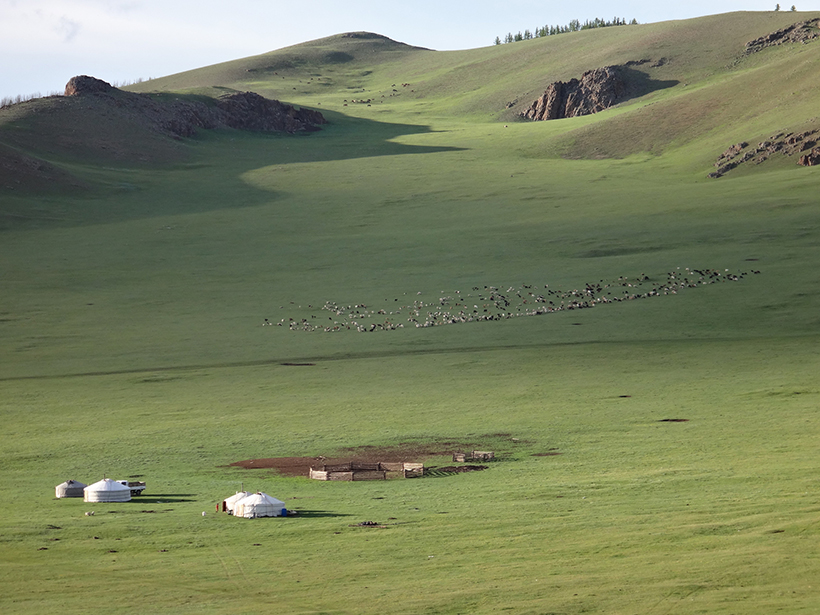Source: Journal of Advances in Modeling Earth Systems (JAMES)
The sight of animals—horses, cattle, sheep, and goats—grazing in a field or pasture is pleasantly bucolic. But in addition to being picturesque, these herbivores play a critical role in local and global ecosystems. For example, the presence of grazing herbivores is known to have an effect on plant health and productivity, biodiversity and species composition, nutrient cycling, and other processes. Also, because grass has a higher albedo than bare soil, grazing reduces the amount of sunlight that is reflected back into Earth’s atmosphere, which impacts the global climate.
In turn, climate (especially extreme conditions, such as drought and frost) and other natural factors such as topography, soil composition, and access to food, water, and shelter all affect the health and survival of these animals.
Over the past couple of decades, few studies have considered the impacts of grazing herbivores on ecosystems; of those, most have been limited to certain species, for example, just sheep and cows, or age groups. Here Dangal et al. incorporate grazing herbivores into a global model: the third-generation Dynamic Land Ecosystem Model (DLEM).
For this study, the team of researchers focused on domesticated, rather than wild, grazing herbivores. They compared the ability of different species to grow, reproduce, and, ultimately, die in relation to food and water availability, climate, and other environmental factors. They also modeled the effects of herbivores on carbon, nitrogen, and water cycles, as well as vegetation and soil health. Although animals are essential for the functioning of ecosystems, these critical members have been a missing component of land biosphere and Earth system models. According to the researchers, this pioneering study is a critical step toward accurate representation of animal population dynamics in global land biosphere models.
The team’s results showed that grazing herbivores have a profound impact on carbon dioxide and methane exchanges between Earth and its atmosphere, as well as on global climate. The study highlights the important role that these animals play in their local and global ecosystems. (Journal of Advances in Modeling Earth Systems (JAMES), https://doi.org/10.1002/2016MS000904, 2017)
—Sarah Witman, Freelance Writer
Citation:
Witman, S. (2018), Critical role of grazing animals in an ecosystem, Eos, 99, https://doi.org/10.1029/2018EO091093. Published on 30 January 2018.
Text © 2018. The authors. CC BY-NC-ND 3.0
Except where otherwise noted, images are subject to copyright. Any reuse without express permission from the copyright owner is prohibited.

